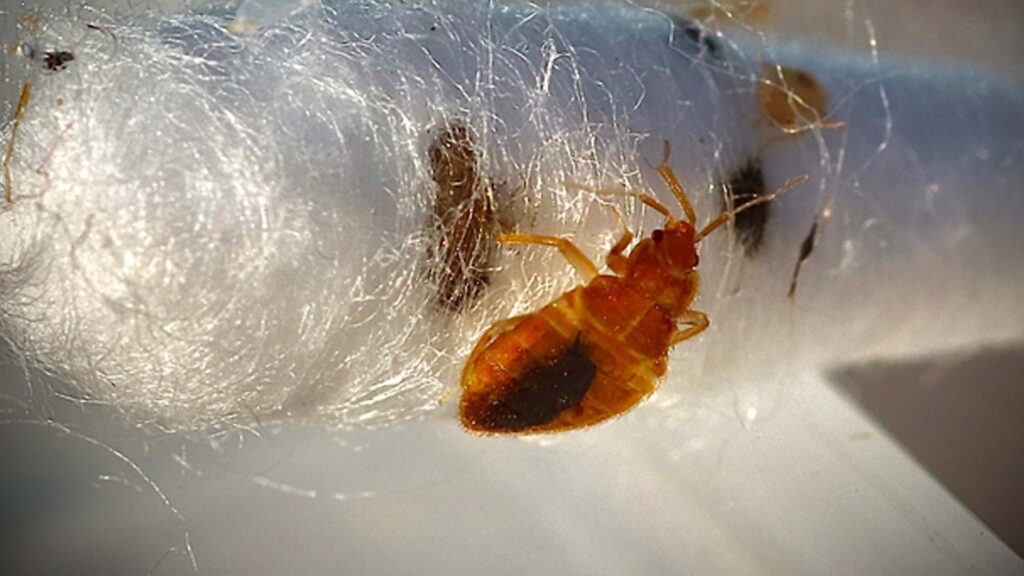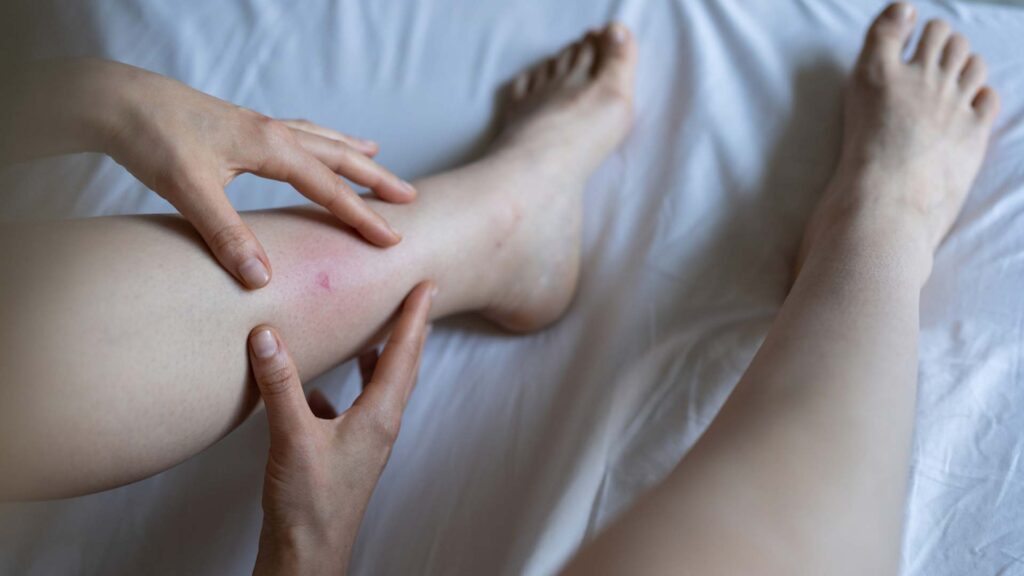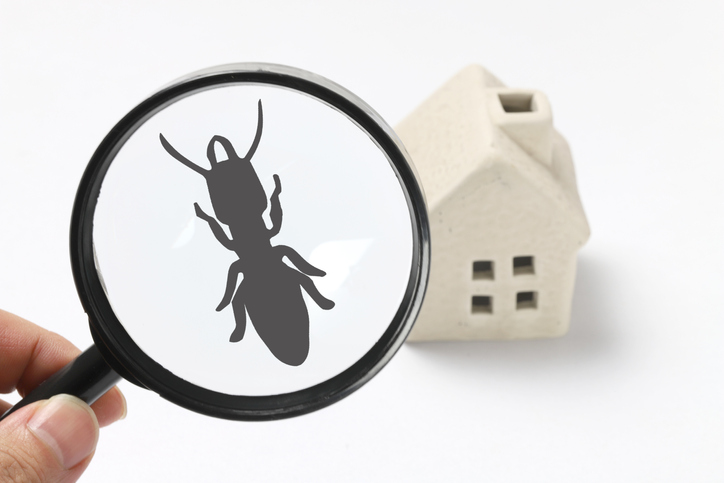Are bed bugs visible?
Yes, ants can cause structural damage, particularly carpenter ants, which are known for their ability to excavate wood to create their nests. Unlike termites, carpenter ants do not eat wood but remove it to expand their living areas, potentially weakening the structural integrity of buildings over time. While not all ant species pose a threat to structures, identifying and addressing a carpenter ant infestation early is crucial to prevent significant damage. Homeowners should watch for signs like sawdust-like shavings and large, winged ants, which indicate the presence of these wood-damaging pests.

- The Elusive Nature of Bed Bugs: A Closer Look
- The Lifecycle and Detection of Bed Bugs
- Role of Scent Detection in Bed Bug Management
- Practical Advice for Homeowners in Bed Bug Prevention and Management
- Navigating the Challenge: A Deeper Dive into Combating Bed Bugs
- Frequently Asked Questions About The Visibility of Bed Bugs
Bed bugs are indeed visible to the naked eye, typically measuring about 5 millimeters in length, akin to the size of an apple seed. Adult bed bugs can be spotted due to their reddish-brown color and oval, flat bodies. However, detecting them can be challenging as they are nocturnal and adept at hiding in tiny crevices within mattresses, furniture, and even behind wallpapers. While their eggs and nymphs are smaller and harder to see, signs like shed skins and small blood spots on bedding can indicate their presence. Regular inspection and awareness of these signs are key in identifying a bed bug infestation.
In the quiet, unsuspecting corners of our bedrooms, beneath the comfort of our sheets, a tiny yet formidable foe often lurks unseen and undetected: the bed bug. These minuscule invaders, known scientifically as Cimex lectularius, have emerged as a growing concern in households across the globe. Their presence, often unnoticed until it’s too late, raises pressing questions about their visibility, behavior, and the risks they pose to home safety and human health.
Bed bugs have coexisted with humans for centuries, thriving in our most intimate spaces. Their resurgence in recent years, particularly in urban environments, has brought them back into the spotlight, challenging homeowners, renters, and even the hospitality industry. These pests, once thought to be a problem of the past or confined to areas of poor sanitation, have proven to be a more pervasive and resilient threat.
The issue of visibility plays a crucial role in understanding and managing bed bug infestations. While adult bed bugs are indeed visible to the naked eye, their small size, coupled with their nocturnal and secretive nature, makes them masters of concealment. This ability to hide effectively not only complicates detection but also contributes to the widespread misunderstanding and underestimation of these pests.
Moreover, the psychological and physical impact of bed bugs extends beyond mere bites. The knowledge of sharing one’s living space with these pests can lead to significant stress and anxiety, disrupting the sense of comfort and safety we associate with our homes. This emotional toll, coupled with the physical reactions to bed bug bites, which can range from minor irritation to severe allergic reactions, underscores the importance of awareness and early detection.
As we delve deeper into the world of these elusive pests, it becomes clear that understanding their behavior, lifecycle, and effective control measures is essential for maintaining the sanctity and health of our living spaces. The following article aims to shed light on the often-overlooked aspects of bed bug infestations, offering a blend of technical insight and practical advice to empower homeowners in their fight against this unseen threat.
The Elusive Nature of Bed Bugs: A Closer Look
Bed bugs, small and often underestimated, present a significant challenge in household pest management due to their elusive nature. Understanding the characteristics and behaviors of these pests is crucial for homeowners grappling with potential infestations.
Physical Characteristics
Adult bed bugs are indeed visible to the naked eye, but their size and coloration contribute to their ability to remain undetected. Measuring about 5 millimeters in length, they are comparable in size to an apple seed. Their flattened bodies enable them to squeeze into incredibly small spaces, often as thin as a credit card. This physical trait allows them to hide in crevices and cracks that are typically overlooked during casual inspections.
Bed bugs are primarily nocturnal, emerging from their hiding places at night to feed on the blood of sleeping humans. This nocturnal behavior, coupled with their tendency to retreat to hidden locations during the day, makes detecting them a challenge. They are attracted to the warmth and carbon dioxide emitted by humans, guiding them stealthily to their hosts.
Bed Bug Basics – What You Need to Know
- Adult bed bugs are about the size of an apple seed, approximately 5 millimeters in length.
- Reddish-brown, becoming more red after feeding.
- Oval and flat, allowing them to hide in narrow spaces.
- Typically 2 to 4 months, but can live longer under optimal conditions.
- Primarily nocturnal feeders, they feed on human blood.
- Visible to the naked eye, but often hide in hard-to-see places.
The reproductive rate of bed bugs adds to their elusive nature. A female bed bug can lay hundreds of eggs over her lifetime. These eggs are incredibly small, about the size of a speck of dust, making them nearly impossible to see without magnification. The rapid reproduction rate can lead to a significant infestation in a relatively short period, often before homeowners are even aware of their presence.
Bed bugs are known for their resilience. They can survive for months without feeding, allowing them to persist in vacant rooms or furniture. This survival ability means that they can easily hitchhike in luggage, clothing, and used furniture, spreading from place to place undetected.
Detecting bed bugs requires more than a casual glance. Homeowners must look for subtle signs of their presence, such as tiny blood spots on sheets, a sweet musty odor, or the aforementioned shed skins. Professional pest inspectors often use specialized tools, including canine detection, to identify infestations that are not immediately visible to the untrained eye.
The elusive nature of bed bugs stems from their physical characteristics, behavioral adaptations, rapid reproduction, and remarkable survival tactics. These factors combine to make bed bugs a particularly stealthy and persistent household pest. Awareness and vigilance, along with professional assistance when necessary, are key to managing and preventing bed bug infestations effectively.
The Lifecycle and Detection of Bed Bugs
Understanding the lifecycle of bed bugs is not just a matter of curiosity but a critical aspect in detecting and managing these pests effectively. This knowledge equips homeowners with the ability to recognize early signs of infestation and take timely action.
A bed bug’s life begins as a tiny egg, about the size of a speck of dust, often laid in hidden locations like mattress seams or furniture joints. These eggs hatch within one to two weeks, revealing nymphs – immature bed bugs that immediately start their quest for blood.
As they grow, nymphs undergo five molting stages, shedding their skin at each stage. These shed skins, along with the tiny, dark fecal spots they leave behind, are often the first visible indicators of an infestation. The entire lifecycle from egg to adult can be completed in as little as a month under optimal conditions, with a typical lifespan of about four to six months.
Understanding and Detecting Bed Bugs at Each Lifecycle Stage
| Lifecycle Stage | Description | Size | Signs of Presence | Detection Tips |
|---|---|---|---|---|
| Egg | Pearly white, oval-shaped, laid in hidden spots. | 1mm (size of a pinhead) | Difficult to see; often in clusters. | Use a magnifying glass; check seams of mattresses and gaps in furniture. |
| Nymph (Stage 1) | Newly hatched, requires a blood meal to molt. | 1.5mm (size of a grain of sand) | Tiny, translucent bugs; may see blood spots on sheets. | Look for tiny bugs and faint blood spots; inspect bedding and nightstands. |
| Nymph (Stage 2-5) | Grows through molting, needs multiple blood meals. | 2-4.5mm (size of a sesame seed) | Shed skins, increasing size of bugs. | Examine for shed skins and larger nymphs in crevices of furniture and walls. |
| Adult | Fully grown, reproduces, feeds regularly. | 5-7mm (size of an apple seed) | Visible bugs, fecal spots, bite marks on skin. | Check for live bugs, dark fecal spots, and bites; use flashlight at night. |
| Detection Aids | – | – | – | Canine scent detection; professional pest control assessment. |
Detecting bed bugs is challenging due to their small size and tendency to hide during the day. They are most active at night, which is when they feed on sleeping humans. Bites, often in a line or cluster on exposed skin, can be a sign, though not everyone reacts to them.
Homeowners should regularly inspect for more direct evidence of bed bugs. This includes looking for live bugs, shed skins, eggs, and fecal spots in and around bedding, mattress seams, box springs, bed frames, and nearby furniture. Using a flashlight and magnifying glass can aid in this detailed inspection.
Given the complexity of detecting bed bugs, professional pest control services are often necessary. These experts use a combination of visual inspection and advanced techniques like heat treatment, chemical applications, and even canine detection to identify and address infestations.
The lifecycle and detection of bed bugs are intricate processes that require attention to detail and often professional intervention. Early detection is key to preventing a full-blown infestation. Homeowners should be vigilant, conducting regular inspections and seeking expert help if bed bugs are suspected. With the right knowledge and tools, it is possible to keep these elusive pests at bay.
Role of Scent Detection in Bed Bug Management
The battle against bed bugs has led to innovative strategies, one of which is the use of scent detection. This method, often involving trained canines, has become a crucial tool in identifying and managing bed bug infestations.
The Canine Advantage
Dogs have a highly developed sense of smell, estimated to be tens of thousands of times more acute than that of humans. This extraordinary ability allows them to detect bed bug pheromones, the distinct chemical markers these pests emit. Canine scent detection teams are increasingly employed by pest control services, offering a fast and reliable method for identifying infestations, even in their earliest stages.
The training of bed bug detection dogs is rigorous and specialized. These dogs are taught to distinguish the unique scent of live bed bugs and viable eggs from other household odors. The accuracy rate of a well-trained bed bug detection dog can be remarkably high, often cited as exceeding 90%. This makes them significantly more effective than visual inspections, especially in cases where bugs are hidden in hard-to-reach places.
In practical scenarios, scent detection dogs are used in a variety of settings, from residential homes to commercial buildings and hotels. They can swiftly survey a room and signal their handlers to the presence of bed bugs, often in a matter of minutes. This efficiency is particularly valuable in large-scale inspections, where manual checks would be time-consuming and less effective.
The primary benefit of using scent detection is the ability to detect bed bugs early, often before they become visible or cause significant bites. Early detection can lead to more effective and less costly eradication efforts. However, there are limitations. The success of scent detection depends heavily on the dog’s training and the handler’s expertise. False positives and negatives, although relatively rare, can occur. Additionally, the cost of employing a canine team can be higher than traditional inspection methods.
For homeowners and property managers, integrating scent detection into a broader pest management strategy can be highly beneficial. It serves as a proactive measure, particularly in high-risk areas or in buildings with a history of infestations. While not a standalone solution, when combined with other methods such as heat treatment and chemical applications, scent detection can significantly enhance the effectiveness of bed bug management programs.
Scent detection, harnessing the remarkable olfactory abilities of dogs, has emerged as a vital tool in the detection and management of bed bug infestations. Its integration into pest control strategies represents a blend of nature’s gifts and human ingenuity, offering a powerful means to tackle this persistent and hidden threat in our homes and communities.
Practical Advice for Homeowners in Bed Bug Prevention and Management
For homeowners, the fight against bed bugs requires a combination of vigilance, preventive measures, and prompt action at the first sign of an infestation. The key is to create an environment that is inhospitable to these pests and to be proactive in early detection.
Prevention starts with regular inspection, particularly in bedrooms and living areas. Homeowners should routinely check mattresses, bed frames, and furniture for signs of bed bugs, such as small rust-colored stains, eggs, or shed skins. Using protective covers on mattresses can also help by eliminating hiding spots. When traveling, it’s crucial to inspect hotel rooms and avoid placing luggage on the bed, as these are common ways bed bugs are inadvertently brought into homes. Additionally, reducing clutter in the house limits potential hiding places for bed bugs and makes detection easier.
If bed bugs are suspected, early intervention is critical. Homeowners should avoid the urge to immediately discard infested items, as this can spread the infestation. Instead, vacuuming the affected areas can help remove some of the bugs and eggs, but this should be followed by proper disposal of the vacuum bag in a sealed container outside the home. Washing and drying bedding and clothing at high temperatures can effectively kill bed bugs. For more severe infestations, professional pest control services are often necessary. These experts can provide a more comprehensive approach, including chemical treatments and heat treatments, which are highly effective but require specialized equipment and knowledge.
Homeowners play a crucial role in bed bug management. Regular inspections, preventive measures, and prompt, informed responses to signs of infestation are key to keeping homes bed bug-free. While professional services are often necessary for complete eradication, homeowner vigilance and early action can significantly reduce the scale and impact of an infestation.
Navigating the Challenge: A Deeper Dive into Combating Bed Bugs
The battle against bed bugs is an ongoing and complex one, requiring a multifaceted approach. As these pests continue to adapt and thrive in various environments, it becomes increasingly important for homeowners to be not just reactive but proactive in their strategies.
The adaptability of bed bugs is a significant part of the challenge. They have shown a remarkable ability to develop resistance to conventional pesticides, a fact that has been highlighted in numerous entomological studies. This resistance necessitates a more innovative approach to pest control, one that combines chemical treatments with physical methods like heat treatments and vacuuming.
Given the complexity of effectively dealing with bed bugs, professional expertise becomes invaluable. Pest control professionals are equipped with the tools and knowledge to assess the extent of an infestation and to apply the most effective treatment methods. They can also provide crucial advice on preventing future infestations, which is often as important as dealing with the current problem.
Public awareness plays a critical role in the fight against bed bugs. Understanding how to identify these pests, recognizing the signs of an infestation, and knowing when to seek professional help are key components of effective bed bug management. Educational campaigns and resources provided by public health departments and pest control experts can greatly aid in this regard.
The psychological impact of bed bug infestations is an aspect that often goes unaddressed. The stress and anxiety caused by these infestations can be significant, affecting the quality of life and mental health of those affected. Community support systems and access to mental health resources can be crucial in helping individuals and families cope with the stress of an infestation.
Research into more effective bed bug control methods is ongoing. Scientists are exploring new avenues, including biological control methods and more targeted chemical treatments. Understanding the behavior and ecology of bed bugs is also a key area of research that can lead to more effective control strategies.
In a case study from a major metropolitan city, a comprehensive analysis of bed bug infestations in different types of dwellings was conducted. The study highlighted that infestations were not limited to residential spaces but were also prevalent in commercial settings like hotels and office buildings. This widespread presence challenges the misconception that bed bugs are only found in unclean environments. The study also emphasized the role of human movement and travel in spreading bed bugs, noting that high-traffic areas were more prone to infestations. These insights have significant implications for public health policies and the need for awareness campaigns to educate the public on prevention and early detection of bed bugs.
The visibility of bed bugs is just one piece of a larger puzzle. Dealing with these pests requires a comprehensive understanding of their biology, adaptations, and the environments they thrive in. Homeowners, armed with knowledge and the support of professionals, can effectively tackle bed bug infestations. As research continues to evolve, so too will the methods to keep our homes safe and healthy from these elusive pests.
Frequently Asked Questions About The Visibility of Bed Bugs
Can you see bed bugs with the naked eye?
Yes, adult bed bugs are visible to the naked eye. They are about the size of an apple seed, approximately 5 millimeters in length, making them detectable under close inspection.
What do bed bugs look like?
Adult bed bugs are small, oval, brownish insects. They have flat bodies that become reddish and swollen after feeding. Nymphs (young bed bugs) are smaller and lighter in color.
How can I tell if I have bed bugs?
Look for physical signs like small, reddish-brown fecal spots, egg shells, or shed skins in areas where you sleep or rest. Bites on your skin that appear in a line or cluster, especially after sleeping, can also be a sign.
Are bed bug eggs visible?
Bed bug eggs are very small, about the size of a pinhead, and are a pearly white color. They can be visible but are challenging to detect without magnification.
Where should I look for bed bugs in my home?
Check around beds, including seams of mattresses and box springs, bed frames, headboards, and nearby furniture. Also inspect cracks in walls, edges of carpets, and even electrical outlets.
Do bed bugs come out during the day?
Bed bugs are primarily nocturnal, but they can come out during the day if they are hungry, especially in heavily infested areas.
How quickly do bed bugs spread?
Bed bugs can spread rapidly, especially in multi-unit buildings like apartments and hotels. They can travel between rooms and floors, often hitchhiking on luggage, clothing, and furniture.
Can bed bugs be prevented?
Regular inspection and cleaning can help prevent bed bugs. Using protective covers on mattresses and box springs, reducing clutter, and vacuuming frequently are effective preventive measures.
What should I do if I find bed bugs in my home?
If you find bed bugs, it’s advisable to contact a professional pest control service. Do-it-yourself treatments are often ineffective and can spread the infestation.
Are bed bugs a sign of dirtiness?
No, bed bugs are not attracted to dirt and grime; they are attracted to warmth, blood, and carbon dioxide. They can be found in both clean and dirty environments




